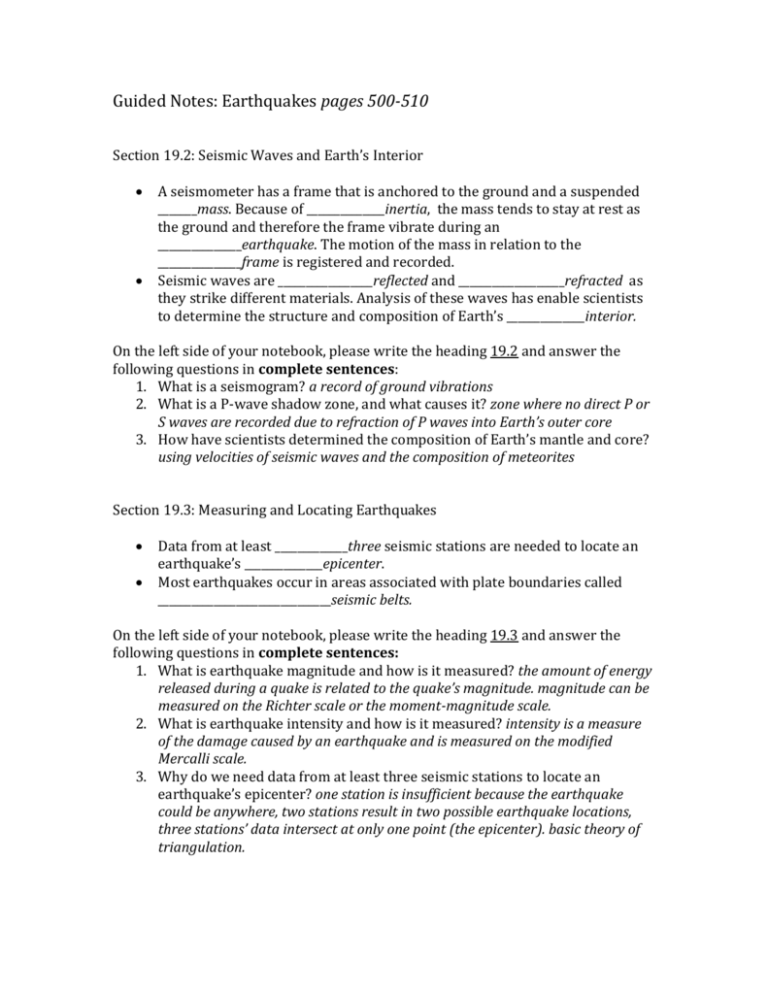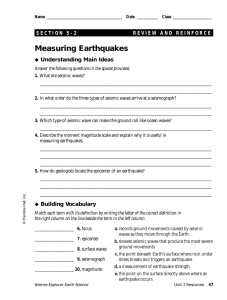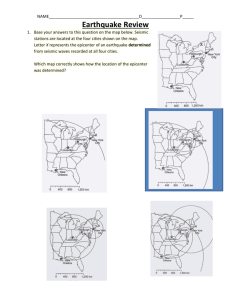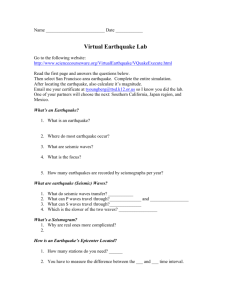Earthquake Guided Notes: Seismic Waves & Measurement
advertisement

Guided Notes: Earthquakes pages 500-510 Section 19.2: Seismic Waves and Earth’s Interior A seismometer has a frame that is anchored to the ground and a suspended _______mass. Because of ______________inertia, the mass tends to stay at rest as the ground and therefore the frame vibrate during an _______________earthquake. The motion of the mass in relation to the _______________frame is registered and recorded. Seismic waves are _________________reflected and ___________________refracted as they strike different materials. Analysis of these waves has enable scientists to determine the structure and composition of Earth’s ______________interior. On the left side of your notebook, please write the heading 19.2 and answer the following questions in complete sentences: 1. What is a seismogram? a record of ground vibrations 2. What is a P-wave shadow zone, and what causes it? zone where no direct P or S waves are recorded due to refraction of P waves into Earth’s outer core 3. How have scientists determined the composition of Earth’s mantle and core? using velocities of seismic waves and the composition of meteorites Section 19.3: Measuring and Locating Earthquakes Data from at least _____________three seismic stations are needed to locate an earthquake’s ______________epicenter. Most earthquakes occur in areas associated with plate boundaries called _______________________________seismic belts. On the left side of your notebook, please write the heading 19.3 and answer the following questions in complete sentences: 1. What is earthquake magnitude and how is it measured? the amount of energy released during a quake is related to the quake’s magnitude. magnitude can be measured on the Richter scale or the moment-magnitude scale. 2. What is earthquake intensity and how is it measured? intensity is a measure of the damage caused by an earthquake and is measured on the modified Mercalli scale. 3. Why do we need data from at least three seismic stations to locate an earthquake’s epicenter? one station is insufficient because the earthquake could be anywhere, two stations result in two possible earthquake locations, three stations’ data intersect at only one point (the epicenter). basic theory of triangulation.











